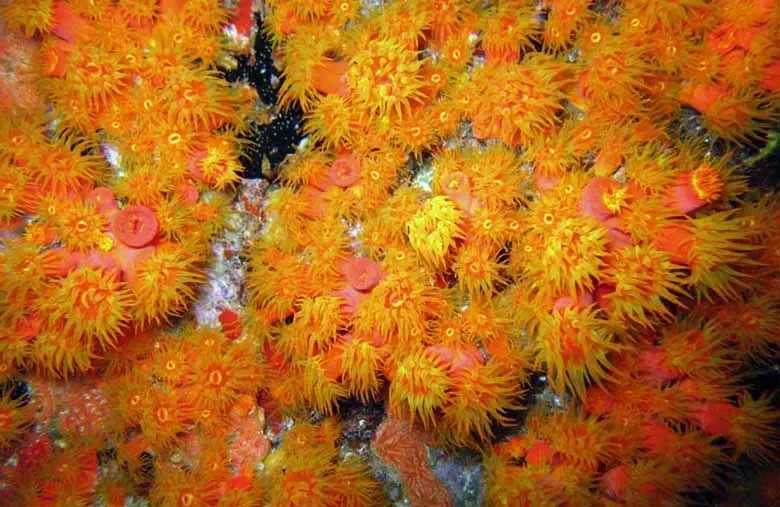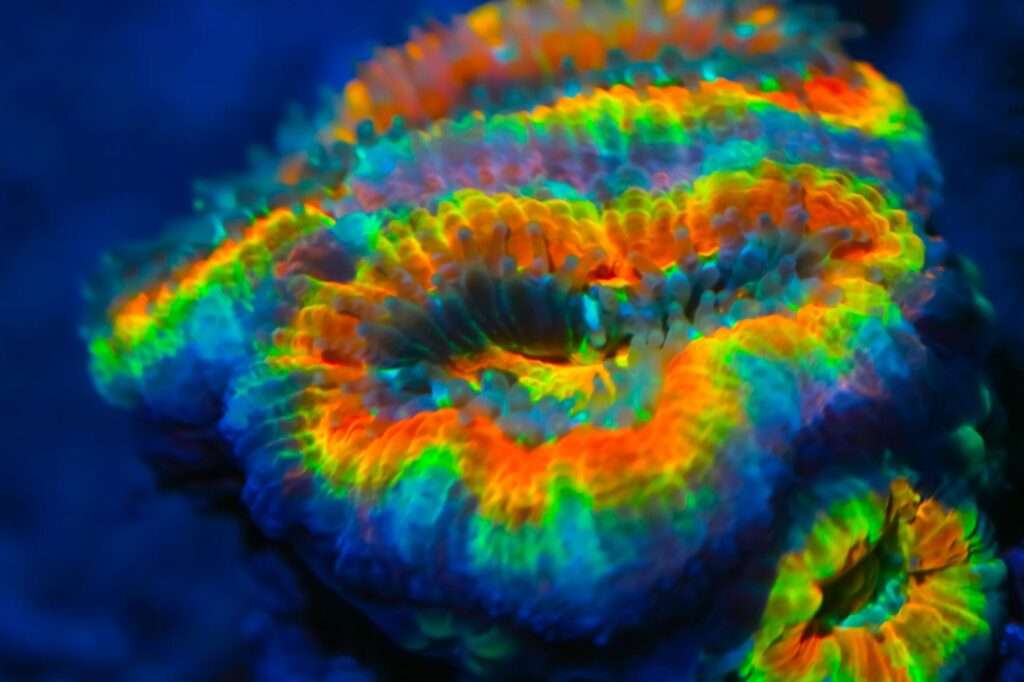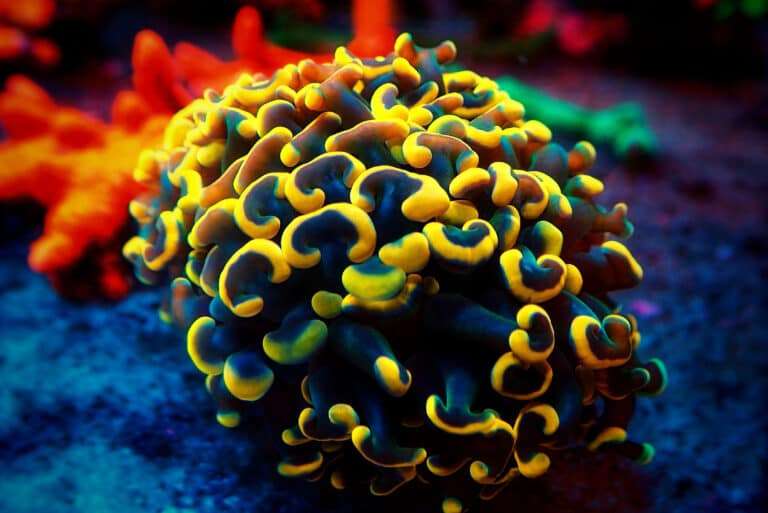
Crown Coral in the realm of reef aquariums, Balanophyllia bairdiana is a recent species that has just recently been accessible. This coral is solitary, and the colony is made up of just one corallite. However, on occasion, they will huddle up together and even attach, forming a tiny group of fused individuals.
These tiny corals, which go by the name Cup Coral, initially have a cup-like shape, but as they grow older, some of them may even take on a figure-eight appearance. These small beauties’ corallites typically measure less than 1/2″ and up to 1.2″ (3 cm) in diameter (1 cm). The weak, porous, and gritty coenosteum tissue that covers the corallite gives it a spongy sensation. Lengthy and typically attached to the substrate, their stalks are long. They may have encrusting organisms growing on them around the base in the wild, including sponges, sea squirts, and bryozoans. They don’t help to form reefs because they are ahermatypic.
Habitat
Wood first outlined the Balanophyllia genus in 1844. With numerous subtropical species, a few tropical species, and few temperate species, this genus essentially covers all oceans and waterways. These corals are known as azooxanthellate corals, or non-photosynthetic corals, which means that light has no impact on their growth and that they only subsist on meals. They are ahermatypic corals, which do not produce reefs. There hasn’t been any captive breeding of this genus. Milne-Edwards and Haime first described the Cup Coral Balanophyllia bairdiana in 1848.
Balanophyllia species range in height from 1 to 420 feet and can be found in the Western Atlantic, Eastern Pacific, Western Central Pacific, Philippines, and Australian coasts as well as subtropical areas of the Mediterranean Sea, USA & Canada coasts, and the Eastern Pacific. The B. bairdiana can be found in the waters around the Philippines in the Western Central Pacific as well as in the waters off southeast Australia. The B. bairdiana can be found in reef settings, most frequently on cave roofs but sporadically in other low-light locations. They often inhabit tropical seas at depths of up to 90 feet (28 m). However, it is said that the Australian species are located between 16 and 246 feet under the surface (5 – 75 m).
Morphology
B. bairdiana start out with a cup-like shape, but some of them even develop a figure-eight shape as they become older. Their corallites normally have a diameter of less than 1/2″ and as much as 1.2″ (3 cm) (1 cm). Corallites feel spongy due to the coenosteum tissue, which covers them and is thin, porous, and grit-like. Their stalks are often long and anchored to the substrate. In nature, they may have encrusting organisms like sponges, sea squirts, and bryozoans growing on them towards the base. They don’t help to form reefs because they are ahermatypic.
B. bairdiana Cup Corals have a delicate appearance. Their stunning tentacles can reach a length of up to 1″ (2.5 centimeters) and are typically translucent. They have small wart-like growths on them that help them catch prey because they contain sticky spirocysts and stinging nematocysts, giving them a spotty look. These lovely tentacles generally come out at night or in very low light to feed. Unknown is the lifespan.
In Captivity

- Feeding
Corals in the azooxanthellate, or non-photosynthetic, genus Balanophyllia are so-called. They may absorb dissolved organic matter, food particles from the water column, and planktonic creatures to feed. The Cup Coral requires daily feedings or more when kept in captivity. Try eating something like brine shrimp, mysis shrimp, or any prey of a similar size that has been enhanced or defrosted. To make sure they get enough nutrition, you can soak the meal in a vitamin solution.
- Social Interactions and Compatibility
The B. bairdiana needs to be kept apart from other corals because of its somewhat aggressive behavior. As they need a lot of food, which could contaminate the water, they will also affect other corals. The Balanophyllia genus base can naturally produce encrusting organisms like sponges, sea squirts, and bryozoans.
Table





